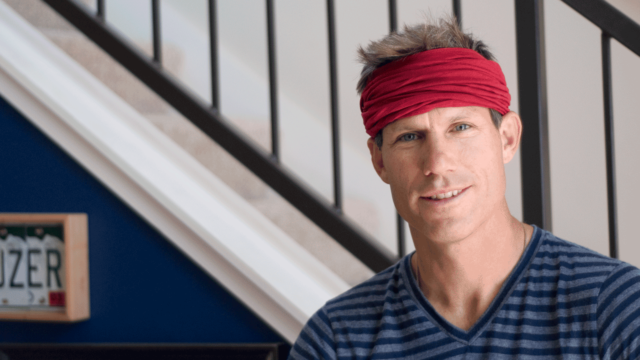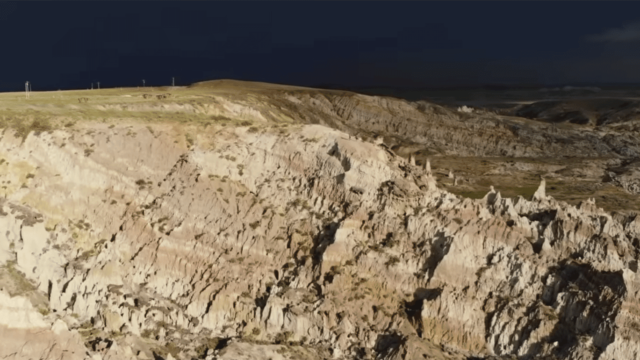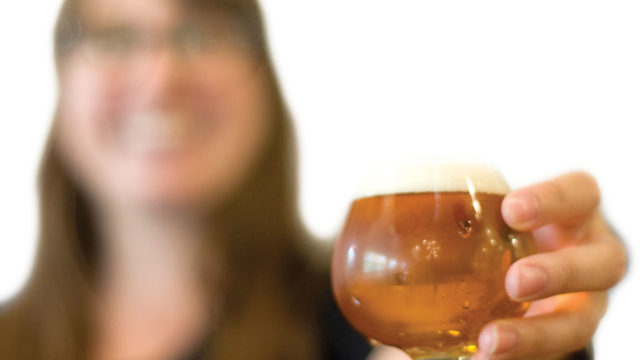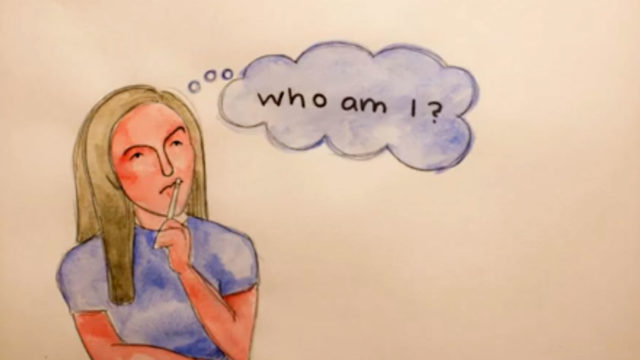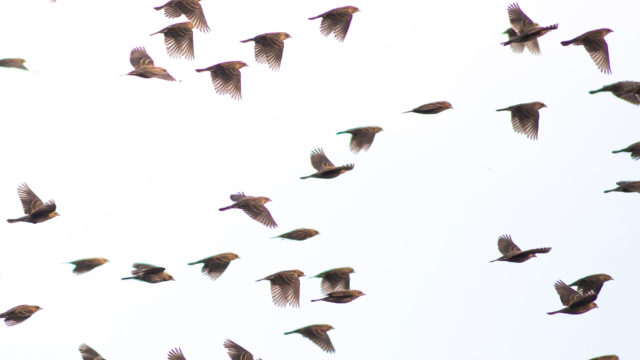Columbia Cemetery features approximately 3,000 sandstone, granite, limestone and marble headstones situated neatly between University Hill and the lower Arapaho neighborhood with a forest of changing ash, elm and evergreen trees interspersed. An aging cast iron fence surrounds the stunning grounds, adding to the spookiness since it’s the same, restored one the city erected in 1913.
Gold-rushers and settlers began developing Boulder more than a century ago in 1859. Older than Hotel Boulderado and some of the well-known homes, like Spruce Street Mansion, looms Columbia Cemetery.

With Halloween approaching, I decided to visit Boulder’s first haunt and see what ghosts emerged. As someone who’s easily startled, I sauntered through Columbia Cemetery on an early Wednesday morning, before the sun was hot enough to melt the frost. But the daylight couldn’t keep me from occasionally checking my surroundings, especially in deep corners away from the gridded gravel paths, or jumping slightly when I was tucked behind bright yellow trees with branches that creaked in the light, cold wind.
The city’s first graveyard is the final resting place for 6,500 bodies, including Marinus Smith, gold-rusher, farmer and original owner of the cemetery.
Situated among a family neighborhood, between Pleasant Street and College Avenue just north of the Hill in Flagstaff Mountain’s shadow, the graveyard emerged a decade after Boulder’s founding, by the time the death count increased with incoming settlers.
I spent an hour searching for the yard’s first headstone, placed back when Boulder’s population was around only 323 residents. Among several dog walkers, I assume from nearby homes, and playful children’s screams from the next door Flatirons Elementary School, I roamed above some of the earliest Boulder corpses to be buried below.
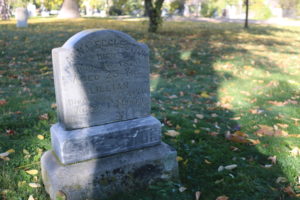
The bodies below
The first burial at Columbia Cemetery, and thus at a Boulder graveyard, was of Anna Eggleston, who died on May 16, 1870, mere weeks after Freemasons bought the cemetery. Though her birthday is unmarked, she was 25 years old when she passed and is buried at the northeast corner of the grounds. Her gravestone is about half as tall as surrounding ones, weathered and worn near the base with moss dripped into the stone’s crevices.
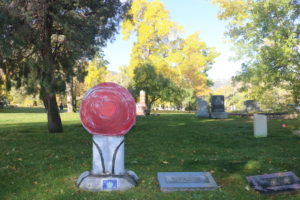
Paula Barchilon’s grave, not a few tombstones from Anna’s, is marked by a giant red, fiberglass lollipop, a favorite of children who can see it from the sidewalk on 9th Street. Paula’s parents hired an artist to craft the memorial, inspired by a bright red abstract painting she once laughed at before she died at age two.
Mary Rippon, buried in the West Avenue Reserve lot, was the first female professor at the University of Colorado, and the first to teach at a state university. She fell in love with one of her students and became pregnant. Because married women weren’t allowed to teach before she died in 1935, Mary wed in secret, then took a sabbatical in Germany to deliver her child, who her husband raised to call her “aunt.” Their affair was a secret until their grandson revealed it in 1977.
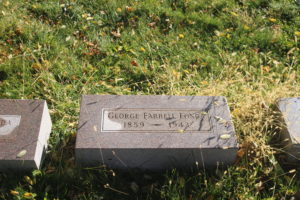
Andrew Macky — banker, a financier of the University of Colorado, and the man who built Boulder’s first frame house, is at lot A-94.
George Fonda, Boulder’s fire chief and Fonda drugstore owner, died in 1943. He’s buried next to the rest of his family, underneath a flat grave I almost tripped over on the way to find it.
“Rocky Mountain Joe” Sturtevant, buried at Lot E-37, photographed the Rockies and was a well-known painter. Other notable Columbia Cemetery residents include Union and Confederate Civil War veterans, Boulder’s first librarian Clara Savory, and several African-American, French, German, Greek, Japanese, Latino and Swedish immigrants to Boulder.
Freemasons’ foundation
Columbia Cemetery, also known as Pioneer or Masonic Cemetery in its early days, developed along with the Columbia Lodge of Ancient Free and Accepted Masons in Boulder, a fraternity with a long international history that conspiracy theorists love to question. In 1870, the lodge bought 10.5 acres for $200 from Marinus Smith.
Until 1900, the Masonic Cemetery had yet to make a profit, proving it difficult to properly maintain the grounds. That’s not an issue today as the Boulder Parks and Recreation Department seems to regularly weed and cut the grass, covered in crunchy, morning frost. A dusting of yellow and orange leaves that have fallen since the city’s last rake stick to my shoes and the wet grass.

A 1909 issue of the Daily Camera called the cemetery “a disgrace to Boulder.” A year later, the city incorporated the Park Cemetery Association to help with upkeep and, over the next several years, the Masons sold their titles to the association. The city fully purchased the cemetery in 1965 when the Park Cemetery Association faced financial troubles, and Boulder Parks and Recreation Department has managed the grounds since.
In 1977, Boulder designated Columbia Cemetery a landmark, closing it to vehicular traffic to preserve the grounds. It joined the National Park Service’s National Register of Historic Places in 1997. Since then, the city has hosted various themed and informational walking tours of the cemetery. Columbia Cemetery’s tour this Halloween is free from 12:30 to 1:30 p.m. and highlights some of the ground’s most notable sites and secrets Boulderites took to the grave.


